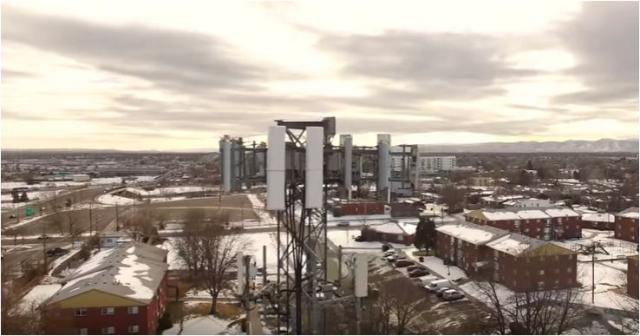 Telecom operator Verizon is set to take a lead in 5G network – beating AT&T. The company will be offering 5G pre-commercial services to select customers in 11 markets in the first half of 2017 on its 5G network.
Telecom operator Verizon is set to take a lead in 5G network – beating AT&T. The company will be offering 5G pre-commercial services to select customers in 11 markets in the first half of 2017 on its 5G network.
Verizon, in association with technology companies Samsung and Ericsson, has built new cell sites in customer locations.
“This is another important step in commercializing gigabit broadband service to homes and offices via wireless 5G connection,” said Adam Koeppe, vice president, Network Planning at Verizon.
ALSO READ: Mobile World Congress 2017
Verizon’s 5G will be available in metropolitan areas: Ann Arbor, Atlanta, Bernardsville (NJ), Brockton (MA), Dallas, Denver, Houston, Miami, Sacramento, Seattle and Washington, D.C.
“Network density is increasing to meet the demands of customers, and following the FCC’s action on 5G spectrum, the time is right to deliver the next generation of broadband services with 5G,” Adam Koeppe said.
Rima Qureshi, head of Region North America at Ericsson; and Woojune Kim, vice president, Next Generation Business Team at Samsung Electronics were instrumental in making 5G a reality in the US.
“The 5G systems we are deploying will soon provide wireless broadband service to homes, enabling customers to experience cost-competitive, gigabit speeds that were previously only deliverable via fibre,” Rima Qureshi said.
Verizon’s 5G Technology Forum partners include, Ericsson, Intel, Qualcomm Technologies and Samsung.
AT&T and 5G
AT&T, which has targets for enhancing IoT revenue, is yet to announce the company’s 5G roll out plans on pilot or pre-commercial basis. IoT revenue for telecom operators will be $250 billion by 2025.
AT&T has recently completed fixed wireless 5G tests with AT&T’s Internet TV streaming service, DIRECTV NOW — in the 39 GHz band.
“With this trial, we’re doing something that no other operator has done – regionally or globally. We expect 39 GHz to be an important 5G band in the United States, and we look forward to continuing our collaboration with Nokia to further advance 5G technology in this band,” said Tom Keathley, senior vice president, Wireless Network Architecture and Design, AT&T.
5G challenges
It is evident that 5G will initially be deployed purely for fixed wireless applications. Verizon’s 5G fixed customer trials will deliver connectivity in the 28GHz, mmWave frequency bands. The viability of these bands should be scrutinized for both mobile and fixed applications, said Jaime Fink, co-founder and CPO, Mimosa.
“Delivering mmWave broadband connectivity in non-line-of-sight (NLOS) environments, such as suburban and urban areas, is extremely problematic over the last quarter mile. This is because signals can be affected by environmental factors such as foliage and solid constructions, typical in suburban areas, where almost 80 percent of the US citizens reside,” Jaime Fink said.
Jaime Fink suggests that rather than using the challenging, unproven mmWave channels for 5G, the telecom industry should use the sub-6GHz spectrum bands, which have propagation characteristics through foliage and construction materials.
“New spectrum reuse technologies are emerging which can coordinate transmissions across various unlicensed and licensed spectrum bands, while reducing interference. This new 5G fixed wireless technology is poised for widespread use in high density neighbourhoods,” Jaime Fink said.
Baburajan K
[email protected]





